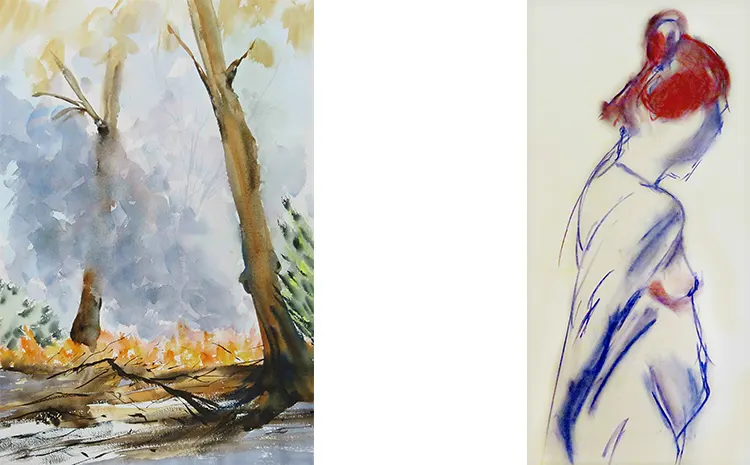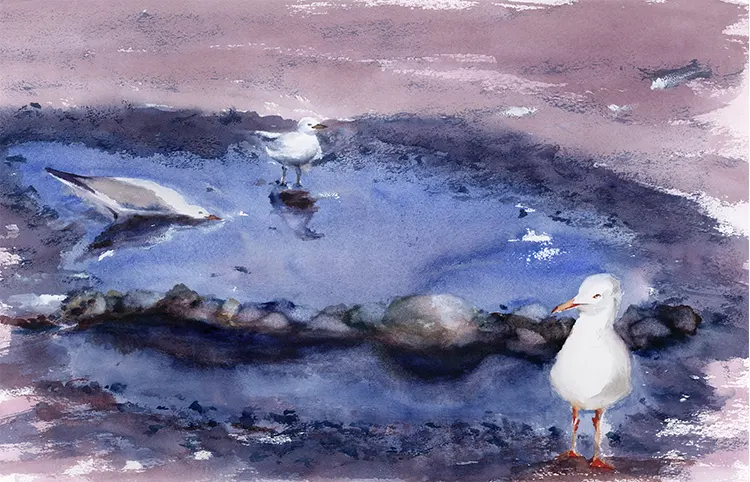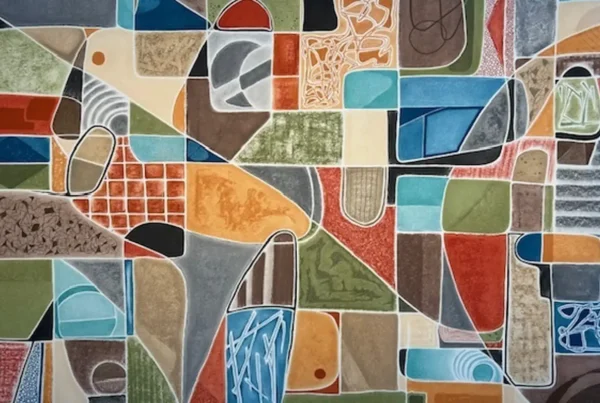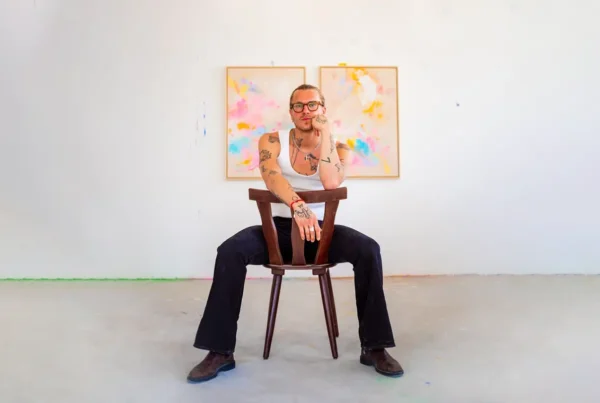“I feel a tremendously close connection with my ancestors and it thrills me that my nephew Tom is continuing this creative lineage through the pursuit of his musical talents.”
Carin Lavery: A Journey Across Continents
Carin Lavery‘s artistic journey is as diverse and rich as the cultures that have shaped her. Born in England, she relocated to Melbourne, Australia at 21, a move that would leave an indelible mark on both her identity and her art. Lavery’s paintings, a canvas of her experiences, embody the essence of these two distinct lands. The artist’s connection to her heritage is profound, tracing back to a lineage filled with creative spirits. From her Norwegian grandmother, related to the famed composer Edvard Grieg, to her great aunt Ellen Grieg, a textile artist, creativity runs deep in her veins. The influence of her family, which includes a glass engraver mother, a published photographer uncle, and ancestors like renowned artist Harry Linley Richardson and a rumoured link to Sir John Lavery, echoes in her works.
Lavery’s artistry isn’t confined to paint and canvas; she is a poet at heart, having written poetry since the age of eight. Her writing, like her painting, is spontaneous and emotive, often the result of profound emotional moments. Carin Lavery’s ability to intertwine her artistic endeavors speaks volumes of her multifaceted talent. Her practice extends beyond watercolor to include graphite and pastel, capturing the human form with a sensitivity and awareness that only someone deeply in tune with their creative lineage could achieve. This connection to her ancestors is not just a source of pride but a living, breathing element in her art, as seen in her nephew Tom’s pursuit of music, continuing the family’s creative legacy.

The Awakening of an Artist
Carin Lavery’s path to becoming an artist wasn’t straightforward. Initially deterred from pursuing art college, she embarked on a professional career while her artistic aspirations lay dormant. It wasn’t until the age of 55, after a 38-year hiatus, that her artistic spirit was reawakened. A casual mention of her past drawings to a friend led to her first commission – to draw his cat and then his dogs. This encouragement was the catalyst she needed. Lavery plunged into watercolor lessons, learning from acclaimed artist David Taylor. Her initial lack of technique was no barrier; instead, it fueled her passion, leading to the creation of over 200 paintings in just two years.
Lavery’s style is as unpredictable as it is instinctive, ranging from impressionistic to abstract to realistic. Her art is a surprise even to herself, often looking back at her finished works with a sense of awe and disassociation, as if observing another artist’s creation. This detachment from her day-to-day life is what she seeks in her art – a freedom, a ‘rolling in the mud’ moment, untethered by the constraints of her professional work in modern slavery and domestic and family violence. Lavery’s artistic expression is a journey of self-discovery, a search for a level of uninhibited creativity that she believes is still to be fully unearthed.

Carin Lavery: The Sanctity of Space and Medium
Carin Lavery’s creative process is deeply intertwined with the need for a tranquil and uncluttered mental space. She emphasizes the importance of ‘no deadlines,’ a philosophy that allows her art to flourish organically, free from the constraints of everyday distractions. Lavery’s approach to painting is as much about the internal preparation as it is about the physical act of creating. Her dedication to her partner, who is battling incurable cancer, underscores her commitment to her personal life, which profoundly influences her art. The artist’s mantra, ‘I need space,’ is not just a physical requirement but a necessary mental state for her creativity to truly come alive.
In her workspace, Lavery prefers large formats, typically working on full sheets of high-quality paper like Arches, Sanders Waterford, or Baohong. Despite her preference for grand scales, she adeptly adapts to smaller sizes for practical purposes, like creating watercolor calendars of local scenes during the COVID-19 pandemic. These calendars were more than just art; they were a means for Lavery to connect with her community in Melbourne, lifting spirits and fostering a sense of togetherness. Moreover, her commitment to social causes is evident in her paintings that highlight the knowledge and skills of Aboriginal, First Nations, and Torres Strait Islander Peoples. Through her art, she honors their history and acknowledges their custodianship of the land, sky, and waterways she feels privileged to paint.

The Inspirations and Dreams of Carin Lavery
Carin Lavery finds her greatest artistic inspiration within her family tree, drawing strength and motivation from her lineage of creative individuals. However, her influences extend beyond her ancestral connections. Artists like JMW Turner, John Singer Sargent, Ben Quilty, John Olsen, and John Wolseley ignite her imagination with their vibrant, color-rich, and free-spirited works. Lavery’s style, though uniquely her own, resonates with the vibrancy and freedom these artists represent, regardless of their primary mediums.
One of Lavery’s most cherished creations, ‘The Magical Colours of Port Phillip Bay,’ epitomizes her artistic aspirations. This piece, significant for its scale and the spontaneous, intuitive approach she employed, brings her closer to her metaphorical ‘rolling in the mud’ moment – a state of uninhibited, joyful creation. Her preference for watercolor, chosen for its freedom and fluidity over the restrictions she feels with oil or acrylic, reflects her desire for an unbound, expressive medium. Lavery dreams of a future where she can engage in unrestrained artistic exploration, envisioning a studio where her creations, particularly large-scale, free-flowing life studies, can unfold without limitations. This dream is a testament to her unceasing quest to push the boundaries of her art, constantly seeking that elusive ‘mud’ moment where spontaneity and creativity converge.






